Highlights and access methods of Kofukuji Temple (Nara Prefecture)
English | Japanese
Kofuku-ji is a temple located in Nara City, Nara Prefecture, and is the head temple of the Hosso sect. Its origin traces back to a temple known as Yamashina-ji, which was constructed in Kyoto. In 710, during the relocation of the capital to Heijo-kyo, it was moved to its current location and renamed Kofuku-ji. It houses Japan's second tallest wooden pagoda, a five-story tower. Moreover, in 2018, the central facility known as the Central Golden Hall was reconstructed for the first time in 301 years. Kofuku-ji is registered as a UNESCO World Heritage Site and is part of the Historic Monuments of Ancient Nara.
In this article, we will explain the attractions of Kofukuji Temple in Nara Prefecture and how to access it for those who are traveling to Japan from overseas.
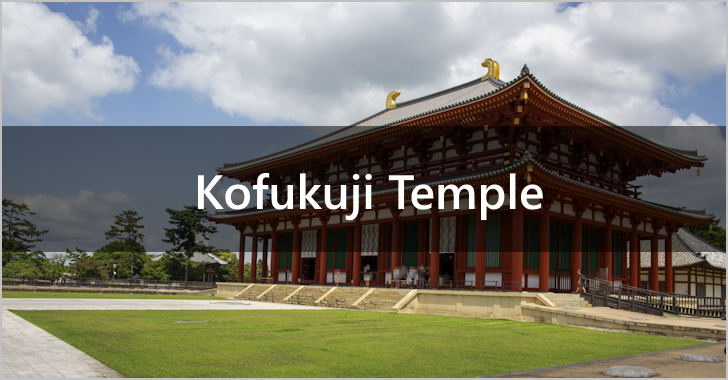
(Last modified: )
(Prefecture : Nara , Category : Temples)
Table of contents
Highlights of Kofukuji Temple
We will introduce the highlights of Kofukuji Temple.
About Kofukuji Temple
Kofuku-ji Temple originated from Yamashina-ji Temple, which was established in 669 by Kagami-no-Okimi, the wife of Fujiwara no Kamatari, as the family temple of the Fujiwara clan. Later, in 672, Yamashina-ji was relocated to Fujiwara-kyo and renamed Umaya-saka-dera Temple. Then, in 710, coinciding with the relocation of the capital to Heijo-kyo, it was moved to its current location and renamed Kofuku-ji Temple.
Kofuku-ji flourished alongside the Fujiwara clan, boasting significant influence from the Nara period onwards. Even from the Warring States period into the Edo period, it maintained a considerable scale of power. Furthermore, from the Heian period onward, it was operated in conjunction with Kasuga Shrine (now known as Kasuga Taisha), which was also founded by the Fujiwara clan. However, after the Meiji era's decree separating Shintoism and Buddhism, most of the temple's precincts were confiscated, leaving only the temple building's grounds in the end.
Much of the former grounds of Kofuku-ji has become the modern-day Nara Park. For instance, the Noborioji Enchi adjacent to Kofuku-ji and the area known as "Naramachi" are mostly on the old precincts of Kofuku-ji.
Noborioji Enchi:
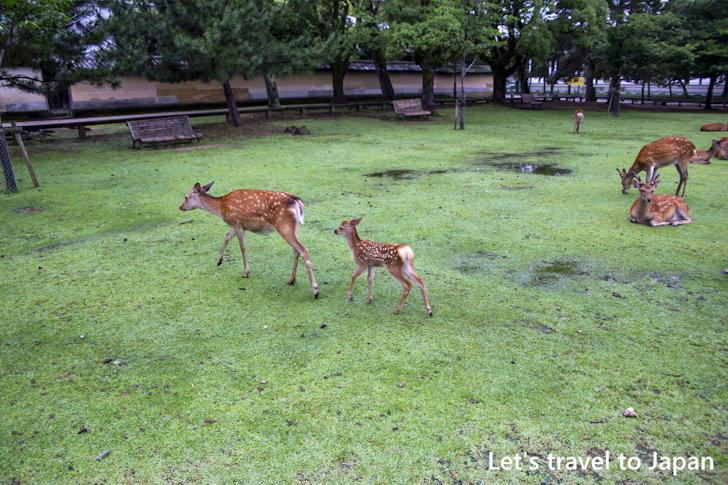
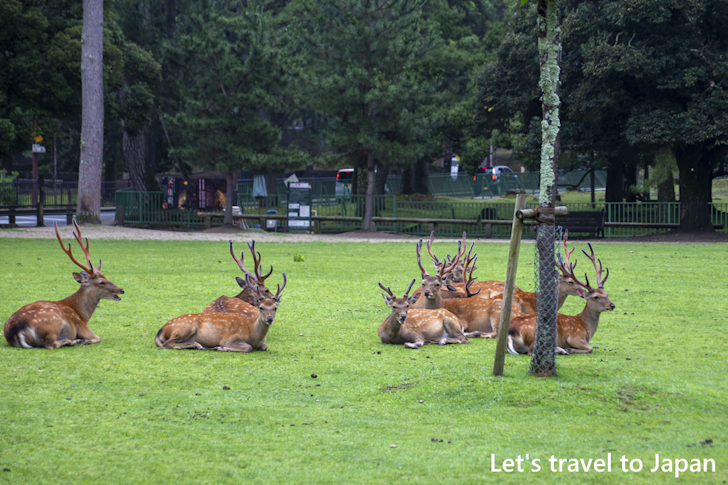
Gojunoto(Five Story Pagoda)
One of the symbols of the ancient capital Nara and designated as a national treasure, the Gojunoto(Five Story Pagoda) of Kofuku-ji Temple was originally built in 730. It has been destroyed by fire several times, with the current structure being rebuilt in 1426.
Standing at a height of 50.1 meters, this pagoda is the second tallest wooden tower in Japan, following the Gojunoto at To-ji Temple in Kyoto. A major restoration project is set to commence in 2023 and is expected to continue until 2031.
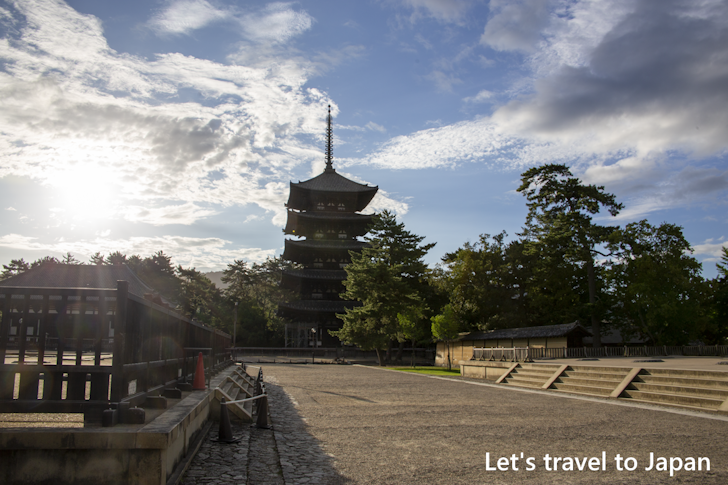
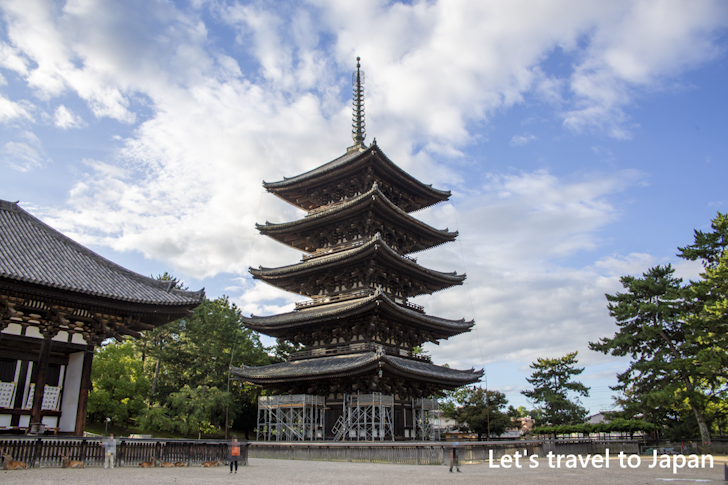
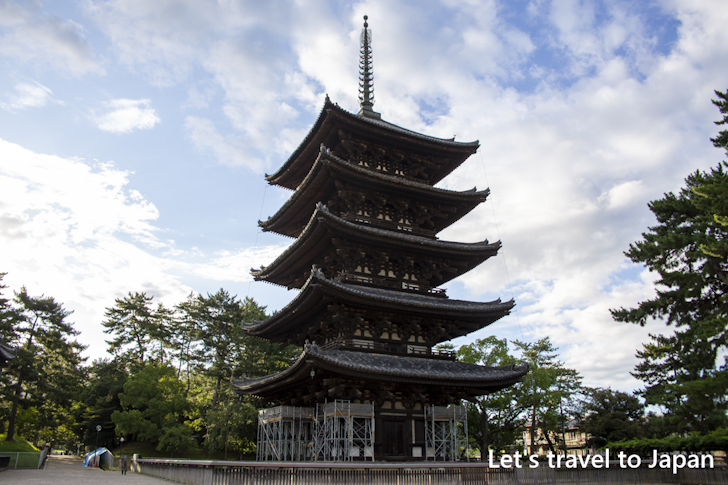
Kohfukuji National Treasure Hall
In the location where a Jikidou(dining hall) once stood, the National Treasure Hall was constructed in 1959. It houses numerous national treasures and important cultural properties, including Buddhist sculptures, paintings, and ancient documents.
Among the works stored there are the wooden statue of Thousand-Armed Kannon and the Ashura statue. Both are designated as national treasures.
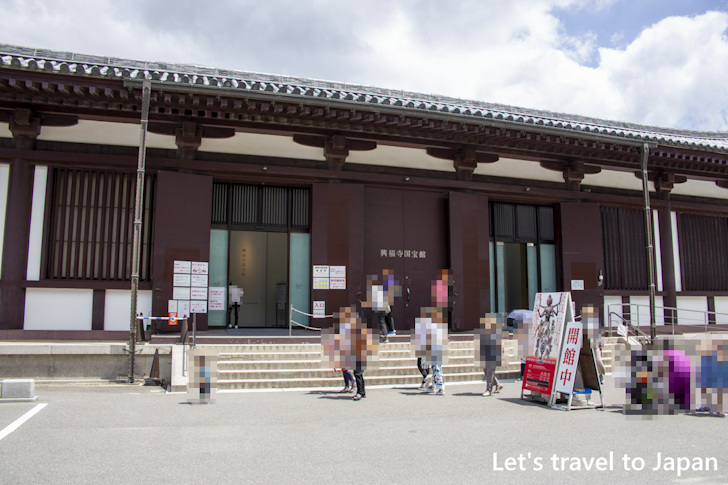
Chukondo(Central Golden Hall)
The Chukondo(Central Golden Hall) began its construction when Kofuku-ji Temple was relocated in line with the move to Heijo-kyo and was founded around 717. It is the most vital building at the heart of the Kofuku-ji Temple complex. It has been repeatedly destroyed by fire, and after being lost in 1717, a temporary hall stood in its place for a prolonged period. However, it was reconstructed in 2018, after nearly 300 years.
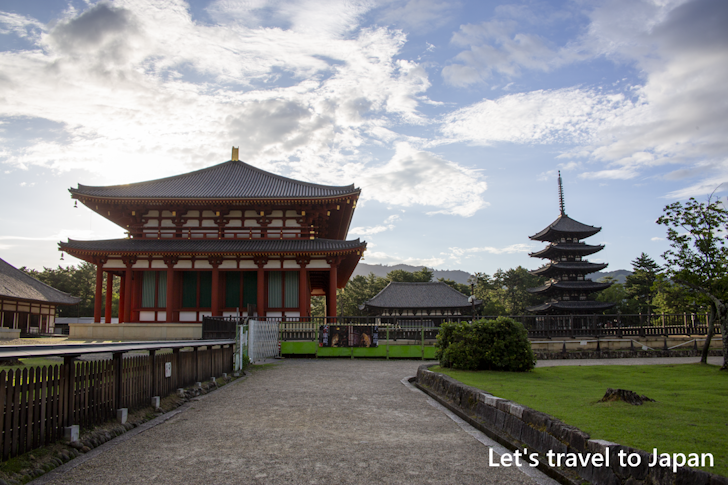
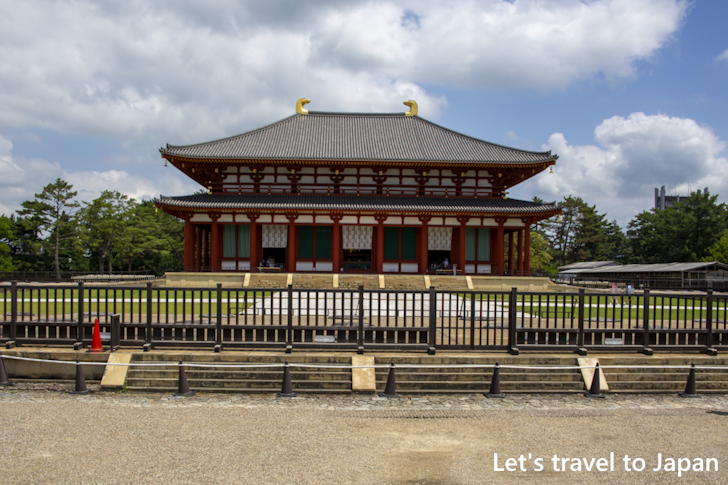
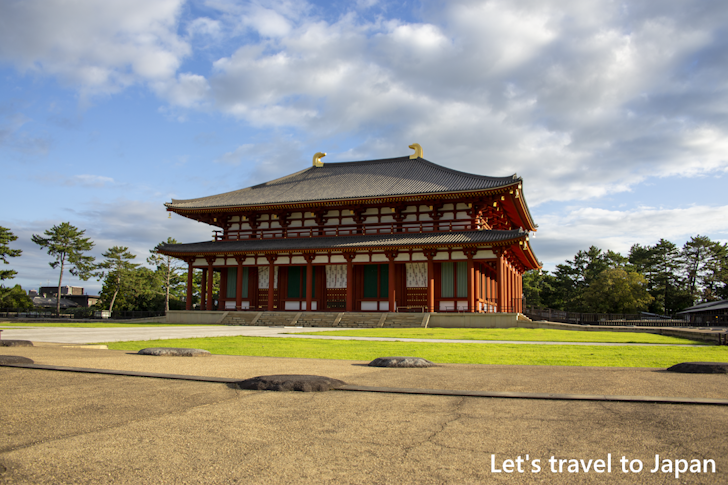
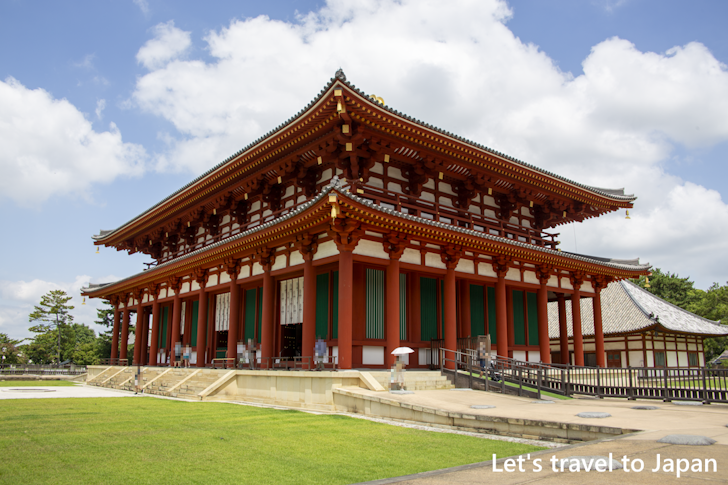
Additionally, apart from the Chukondo, Kofuku-ji Temple has the Toukondo(Eastern Golden Hall) and the Saikondo(Western Golden Hall). While the Toukondo still exists, the Saikondo, which was lost to a fire in 1717, has not been rebuilt, leaving only its foundation stones.
Toukondo(Eastern Golden Hall)
The Toukondo(Eastern Golden Hall) is located to the east of the Chukondo and was founded in 726. After several fires, the current building was reconstructed in 1415 during the Muromachi period. It is designated as a national treasure.
Inside the hall, significant cultural assets such as the seated statue of Yakushi Nyorai and the standing statues of Nikko and Gakko Bodhisattvas are enshrined.
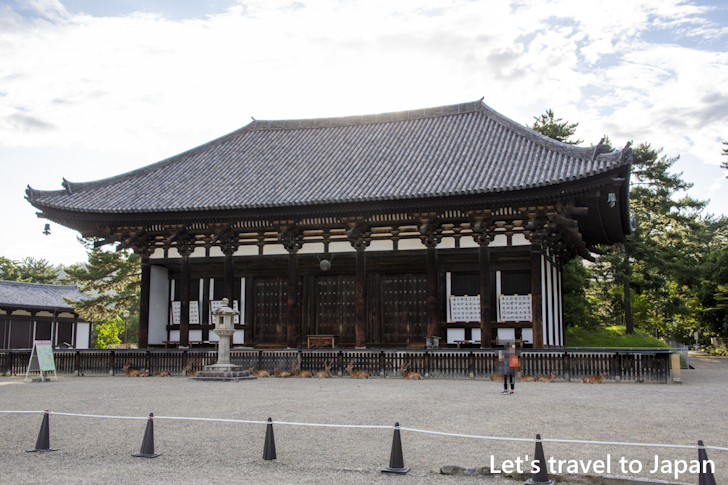
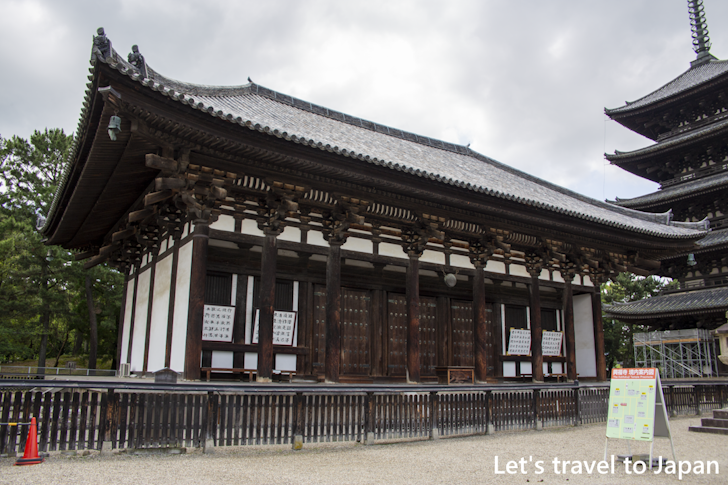
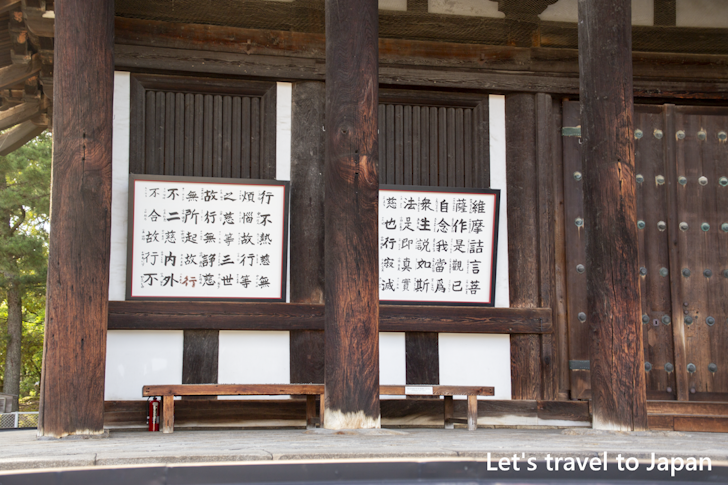
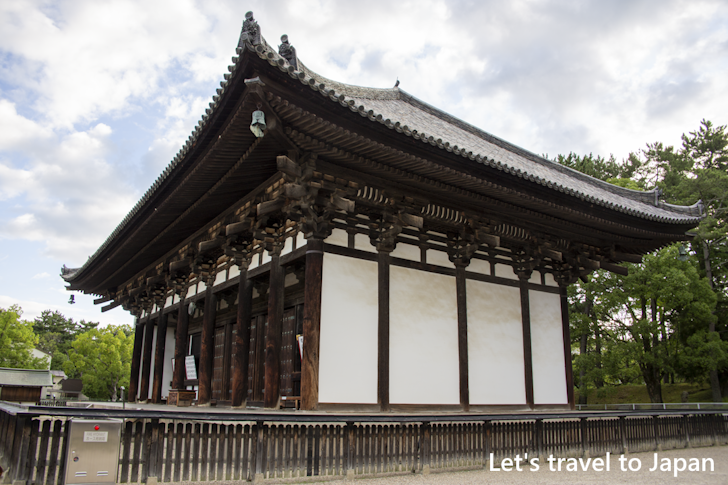
Nanendou(Southern Round Hall)
The Nanendou(Southern Octagonal Hall) is an octagonal structure built in 813 by Fujiwara no Fuyutsugu, wishing for the blessed afterlife of his father, Uchimaro. After several fires, the present building was reconstructed in 1789.
Inside the hall, there are several statues designated as national treasures, including the wooden seated statue of Fuku Kensaku Kannon Bodhisattva, the wooden standing statues of the Four Heavenly Kings, and the wooden seated statues of the Six Hosso Patriarchs. Nanendo is not usually open to the public, but the doors are opened specially on October 17th every year so that you can see the inside.
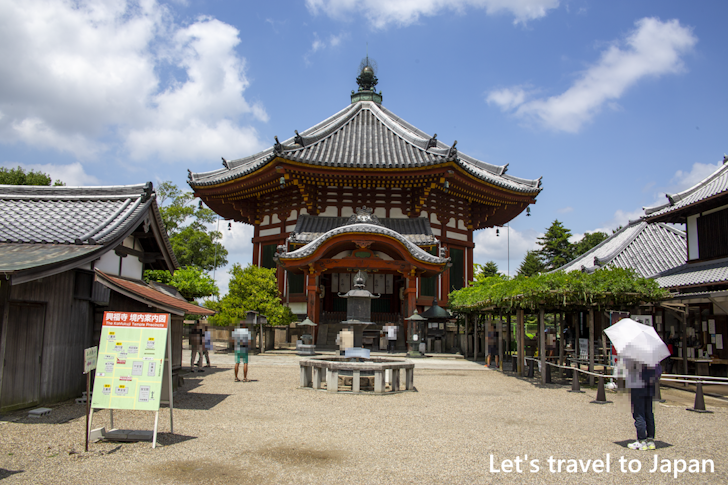
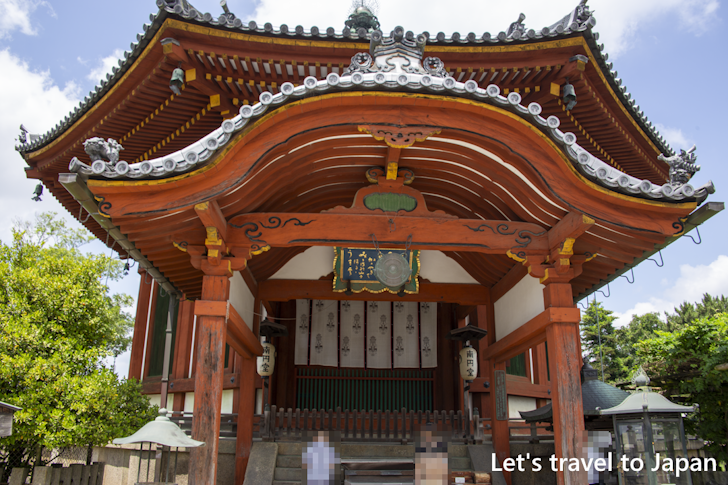
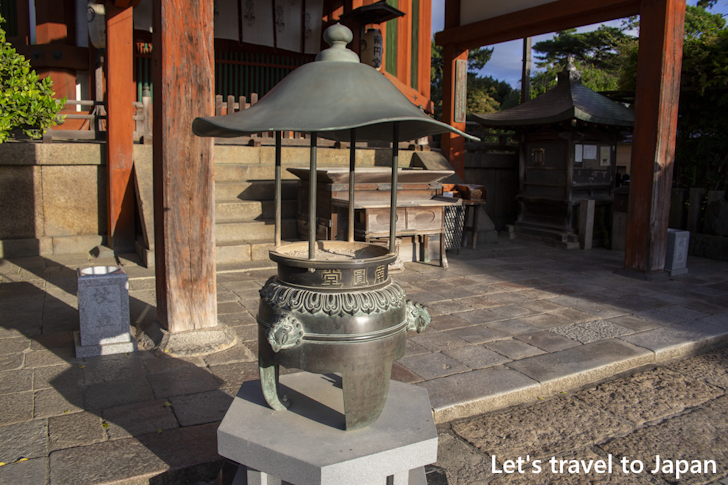
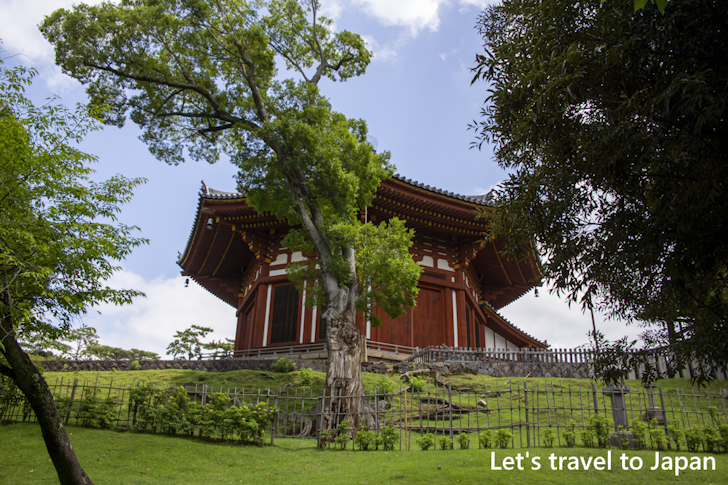
The bronze lantern, known as Kondo Toro, placed in front of Nanendou, dates back to the time the hall was founded and is designated as a national treasure. It is the second oldest after the lantern in front of the Great Buddha Hall at Todai-ji. Currently, the original is stored in the National Treasure Hall, and the one in front of Nandendo is a replica.
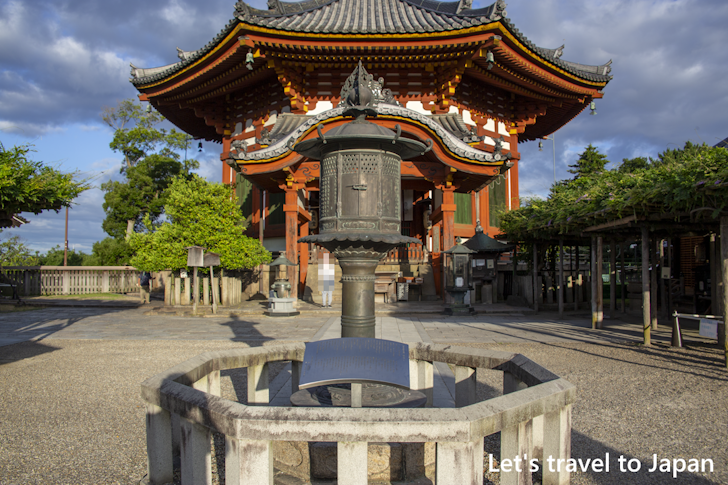
Hokuendou(Northern Round Hall)
The Hokuendou(Northern Round Hall) was established in 721 on the first anniversary of Fujiwara no Fuhito's passing. After being destroyed once by fire, it was reconstructed in 1210. Along with the three-storied pagoda, it's the oldest existing structure within Kofuku-ji Temple and is designated as a National Treasure.
The Hokuendou is typically not open to the public. However, one can view its interior during special, irregularly scheduled open days.
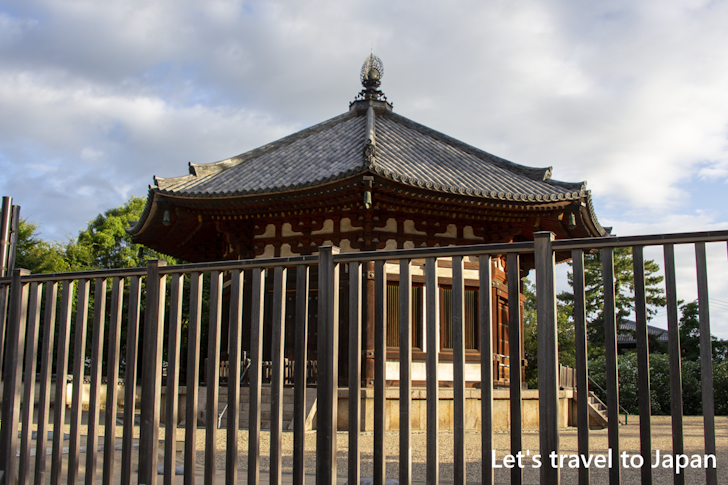
Sanjunoto(Three Story Pagoda)
The Sanjunoto(Three Story Pagoda) was erected in 1143. After being destroyed by fire in 1180, it is believed to have been rebuilt in the early Kamakura period shortly after the destruction, though the exact year remains uncertain. Like the Hokuendouu, it's among the oldest existing buildings within Kofuku-ji and is also designated as a National Treasure.
The Sanjunoto is not generally open to the public, but a special opening is held annually on July 7th, allowing visitors to view its interior.
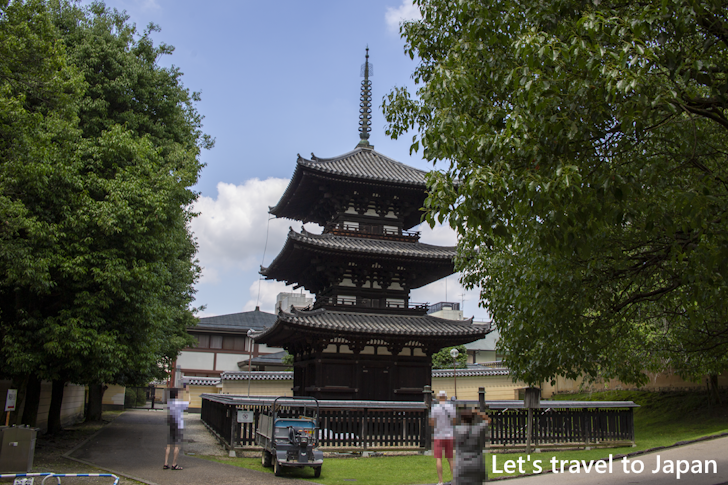
Gojunoto seen from Sarusawa Pond
Sarusawa Pond was created in 749 as a life-releasing pond for Kofuku-ji Temple. Even today, an event called "Houjou-e" is held at Sarusawa Pond by Kofuku-ji Temple. The view of Kofuku-ji's Gojunoto(five-storied pagoda) from Sarusawa Pond is considered one of the iconic landscapes representing Nara.
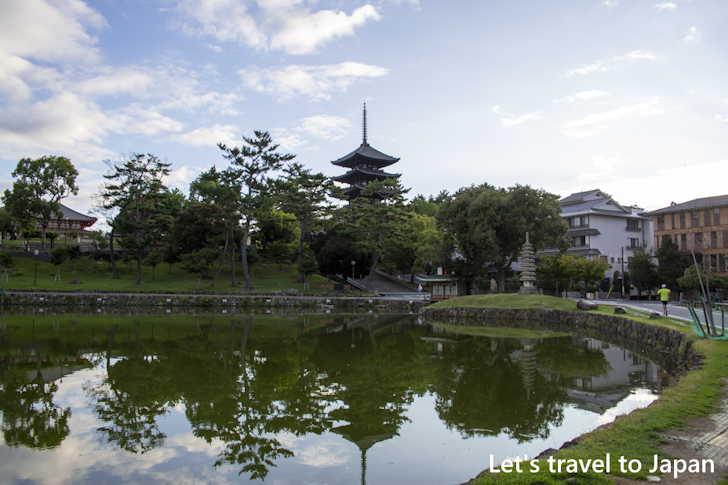
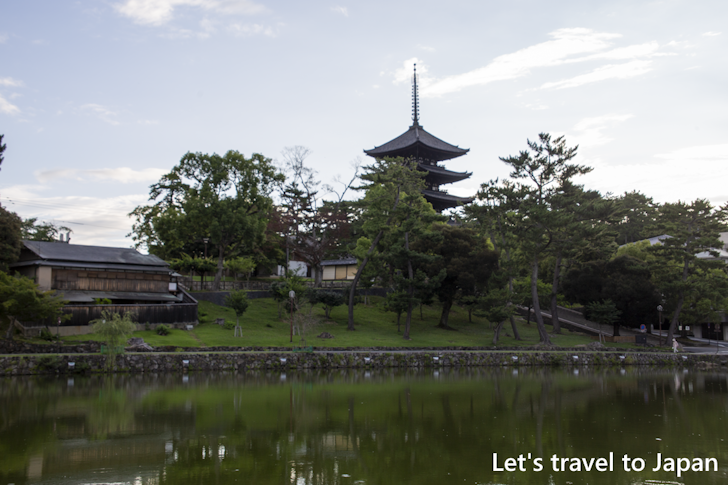
List of photos related to Kofukuji Temple
Please see below for a list of photos related to Kofukuji Temple.
Address and access method of Kofukuji Temple
Address of Kofukuji Temple
The address of Kofukuji Temple is "48 Noborioji-cho, Nara City, Nara Prefecture".
Access method of Kofukuji Temple
I will explain how to access Kofukuji Temple from Kintetsu Nara Station. If you walk from JR Nara Station, it will take about 15 minutes.
Walking
5 minutes
Attractions near Kofukuji Temple
Several notable attractions are located near Kofukuji Temple:
Nara Park
A vast and picturesque park, home to hundreds of free-roaming deer. Within the park, you'll find temples, shrines, and gardens, making it a popular destination for tourists.
Todai-ji Temple
A UNESCO World Heritage site and one of Japan's most famous temples, Todai-ji is known for housing the world's largest bronze statue of the Buddha Vairocana, also known as Daibutsu. It is located within Nara Park.
Kofuku-ji Temple
Another UNESCO World Heritage site, Kofuku-ji Temple features a five-story pagoda, which is one of the tallest wooden structures in Japan. The temple is just a short walk from Kofukuji Temple.
Kasuga Taisha Shrine
A significant Shinto shrine in Nara, also part of the UNESCO World Heritage sites. Kasuga Taisha is famous for its many bronze and stone lanterns and is located within Nara Park.
Nara National Museum
This museum exhibits a vast collection of Buddhist art, including statues, paintings, and ceremonial objects. It is also situated within Nara Park and provides a deeper understanding of Japan's rich cultural history.
Gangoji Temple
Located within Kofukuji Temple itself, Gangoji is an ancient Buddhist temple and a UNESCO World Heritage site. It was once one of the powerful Seven Great Temples of Nara.
Other information about Kofukuji Temple
Official site about Kofukuji Temple :
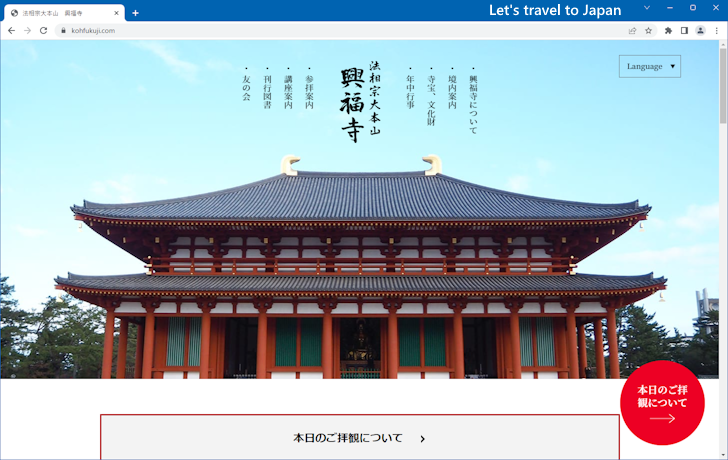
-- --
Thank you for reading to the end.
( Written by Tatsuo Ikura )